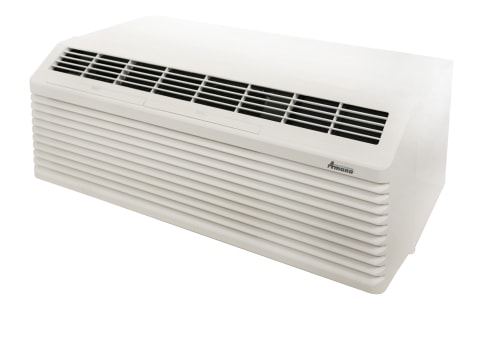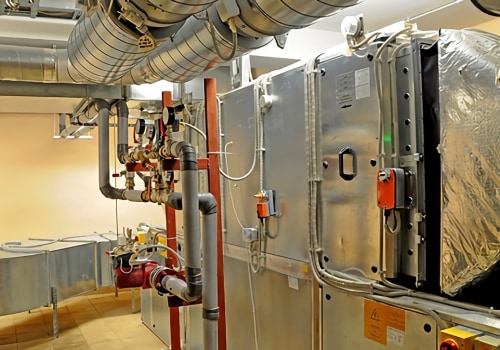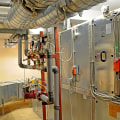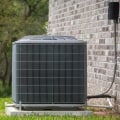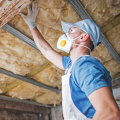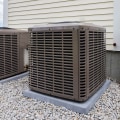Best Home Air Filter for Allergies
When it concerns creating a safe and allergen-free environment within our homes, choosing the right air filter can make all the distinction. With various alternatives and innovations offered in the market, finding the best home air filter for allergies can be a daunting task. From HEPA filters to triggered carbon and UV-C light innovation, each type uses distinct advantages in combating irritants and improving indoor air quality. Understanding the complexities of MERV scores, allergen decrease features, and the effectiveness of air purifiers with ionizers can be pivotal in making a notified decision. Let's explore the realm of home air filters designed to reduce allergic reactions and boost the quality of the air we breathe.
HEPA Air Filters
When considering home air filters for allergies, HEPA Air Filters are extremely suggested due to their exceptional capability to record small particles and irritants in the air. HEPA filters, or High-Efficiency Particulate Air filters, are developed to trap 99.97% of particles as small as 0.3 microns, making them extremely reliable in removing typical allergens like dust, pollen, family pet dander, and mold spores from the air. The benefits of HEPA filters consist of enhanced air quality, minimized allergy signs, and enhanced total respiratory health for individuals conscious of airborne particles.
Maintenance of HEPA filters is vital to guarantee optimum performance. Frequently altering the filter as advised by the manufacturer is vital in maintaining its efficiency. HEPA filters have a longer life span compared to activated carbon filters, however, they still require routine replacement to function efficiently. In addition, vacuuming or dusting the filter surface area can help prolong its life span and prevent blocking, ensuring that the filter continues to catch allergens effectively. In general, HEPA filters offer remarkable advantages in combating allergic reactions and improving indoor air quality compared to activated carbon filters.
MERV Ratings Explained
Comprehending MERV ratings is important when picking an air filter for allergy relief. The MERV score shows a filter's efficiency in catching particles, assisting you choose the right level of filtering for your needs. By thinking about MERV scores, you can make sure that your home's air quality is optimized for minimizing allergens and enhancing total health.
MERV Rating Importance
An essential factor to think about when selecting a home air filter for allergies is the MERV score, which indicates the filter's efficiency in capturing airborne particles. Despite common mistaken beliefs, a higher MERV ranking does not constantly correspond to better indoor air quality. Filters with very high MERV rankings may limit airflow, causing stress on the HVAC system. It's vital to strike a balance between purification efficiency and system compatibility. Regular filter maintenance is vital for optimum performance, especially during peak allergy seasons. Filters ought to be changed according to producer suggestions to guarantee they are catching allergens efficiently. By understanding the MERV rating and its implications, property owners can make educated options to improve indoor air quality and ease symptoms of seasonal allergies.
Choosing the Right Filter
Choosing the proper home air filter for allergies includes comprehending the significance of MERV scores in purification efficiency. MERV, or Minimum Efficiency Reporting Value, determines how successfully the filter can trap particles. Filters with greater MERV scores, such as 13-16, are more effective at recording smaller-sized particles like allergens and pollutants. When picking a filter, consider your indoor air quality needs and any specific allergens you are targeting. To maintain filter performance, follow filter upkeep suggestions like regular replacements according to producer standards. If you choose a hassle-free approach, think about an air filter subscription service for convenient replacements. There are economical options offered that offer excellent purification efficiency without breaking the bank.
Activated Carbon Filters
When thinking about air filters for allergic reactions, triggered carbon filters stand apart for their ability to successfully catch and neutralize different contaminants and odors. These filters are developed to target specific pollutants through a procedure called adsorption, where the contaminants are trapped in the carbon's pores. Among the key advantages of triggered carbon filters is their remarkable smell-removal capabilities. The carbon product has a large surface area that can attract and retain odor-causing particles, helping to refresh the air in your house.
In addition to odor elimination, triggered carbon filters excel in chemical filtering. They can trap a wide range of unpredictable natural substances (VOCs) such as formaldehyde, benzene, and other hazardous chemicals frequently found in family items. By effectively neutralizing these chemicals, activated carbon filters add to producing a healthier indoor environment, specifically for people conscious of these substances. When integrated with other filtering technologies, such as HEPA filters, activated carbon filters provide an extensive solution for improving indoor air quality and reducing allergic reaction symptoms.
UV-C Light Technology
UV-C light technology is an effective tool in the fight against allergens in the home. Understanding the advantages of UV-C light, how it works to get rid of hazardous particles, and its performance in filtering out irritants are essential aspects to consider when selecting an air filter for allergies. By checking out these points, readers can make educated decisions about integrating UV-C light innovation into their indoor air quality services.
UV-C Benefits
The usage of UV-C light innovation in home air filters supplies substantial benefits for people looking for relief from allergies. UV-C light efficiently eliminates airborne bacteria, viruses, and mold spores, minimizing allergens in the air. When considering UV-C technology, it is important to follow UV-C safety precautions to prevent any prospective harm from direct exposure to the light. Additionally, routine maintenance ideas such as changing UV-C bulbs as advised ensure optimal efficiency. Unlike ozone generators that might produce harmful ozone as a byproduct, UV-C filters offer a much safer alternative for allergy victims. When compared to HEPA filters, which record particles but may not eliminate them, UV-C light technology actively gets rid of allergens, offering a more thorough option for allergic reaction relief in the home.
How UV-C Works
Using UV-C light technology in home air filters not only efficiently eliminates airborne germs, viruses, and mold spores to lower allergens but also offers a safer option for allergy patients compared to ozone generators. UV-C innovation summary reveals that these filters use short-wavelength ultraviolet light to interfere with the DNA of bacteria, rendering them safe. This procedure successfully disinfects the air passing through the filter, supplying cleaner indoor air. The benefits of UV-C filters consist of improved indoor air quality, reduced allergens, and boosted respiratory health for individuals with allergic reactions. To maintain the effectiveness of UV-C filters, routine maintenance is necessary. UV-C filter upkeep pointers consist of changing UV-C bulbs as recommended, cleaning up the filter regularly, and ensuring correct airflow for optimal performance.
UV-C Filter Efficiency
Effectiveness in UV-C filter efficiency plays a crucial role in maintaining optimal indoor air quality for allergic reaction patients. Correct UV-C upkeep ideas, such as routine cleansing and guaranteeing the UV-C filter life expectancy is not surpassed, are essential for the filter to run effectively. When comparing UV-C filters to traditional filters, UV-C technology is more efficient at eliminating airborne pathogens and allergens. Although UV-C filters might have a higher initial cost compared to traditional filters, the long-term benefits in regards to enhanced air quality and minimized allergy signs make them a worthwhile financial investment for allergic reaction patients. Performing a cost contrast between UV-C and standard filters needs to also think about the general health benefits and long-lasting efficiency of UV-C technology.
Electrostatic Air Filters
When thinking about air filters for allergic reactions, electrostatic designs offer an efficient service. Electrostatic air filters are known for their capability to trap small particles, including allergens like pollen and family pet dander. These filters work by utilizing fixed electrical power to draw in and capture airborne particles as air goes through them, making them a popular option for allergy sufferers.
One key advantage of electrostatic air filters is their energy performance. Unlike traditional filters that can limit airflow and cause HVAC systems to work harder, electrostatic filters are created to maintain optimum airflow while effectively capturing particles. This not only helps improve indoor air quality but likewise reduces energy consumption, leading to cost savings in the long run.
To ensure the ideal efficiency of electrostatic air filters, regular maintenance is important. Filter upkeep ideas include cleaning or changing the filter according to the manufacturer's directions, typically every 1-3 months, depending upon usage and air quality. By following these upkeep pointers, users can optimize the efficiency and lifespan of their electrostatic air filters.
Allergen Reduction Features
With a focus on enhancing indoor air quality, contemporary air filters include innovative irritant-reduction functions. These features are crucial for individuals seeking relief from allergies triggered by typical indoor pollutants. To optimize the efficiency of irritant reduction, regular filter maintenance is necessary. Easy tasks such as changing filters according to producer guidelines and keeping the filter location tidy can considerably enhance indoor air quality.
For those looking for cost-effective choices, DIY air cleansers can be a practical option. By utilizing readily available products such as a fan and a high-efficiency particle air (HEPA) filter, individuals can create their air cleansers at a fraction of the expense of industrial designs. Do-it-yourself air cleansers can efficiently lower allergens in the air and improve overall indoor air quality.
Air Purifier With Ionizer
Using an ionizer in an air purifier introduces an additional mechanism for improving indoor air quality by actively targeting and reducing the effects of damaging particles. Ionizers launch adversely charged ions into the air, which connect to favorably charged particles like dust, pollen, and pet dander. This procedure causes the particles to end up being too heavy to remain airborne, leading them to be up to the ground or caught by the air cleanser's filters.
One of the crucial advantages of an ionizer is its capability to remove particles as small as 0.01 microns, which are often missed by standard filters. Nevertheless, routine maintenance is important to make sure the ionizer operates effectively. Cleaning up the ionizing wires or plates according to the manufacturer's directions assists keep peak performance.
While ionizers can be highly effective in enhancing air quality, some security issues exist. Ozone production is a common concern with ionizers, as high levels of ozone can be damaging to respiratory health. It is essential to pick an air purifier with an ionizer that produces low levels of ozone, ensuring both effectiveness and security in irritant reduction efforts.
Frequently Asked Questions
Can Air Filters Help With Pet Allergies?
Air filters can successfully prevent pet dander, a common allergen, from distributing indoors. By using high-efficiency purification systems, irritants are caught, enhancing indoor air quality and lessening allergies for those prone to pet allergic reactions.
How Often Should Air Filters Be Replaced for Maximum Effectiveness?
Air filters ought to be replaced every 3 months for optimum performance. Routine replacement ensures optimum effectiveness in eliminating irritants, and pollutants and improving air quality. Although costs differ, reputable brands like Honeywell, 3M, and Filtrete provide quality filters worth the investment.
Are There Air Filters Specifically Designed for People With Asthma?
Air filters developed for people with asthma are important for efficient asthma management. These filters enhance indoor air quality, offering allergic reaction relief and promoting breathing health. Selecting specialized filters can substantially enhance the living environment for individuals with asthma.
Can Air Filters Eliminate Odors From Cooking or Smoking?
Air filters can successfully combat smells from cooking or smoking, enhancing indoor air quality and eliminating pet dander. By using top-quality filters with activated carbon or HEPA technology, these airborne contaminants can be efficiently gotten rid of.
Do Air Filters Require Any Special Maintenance or Cleaning to Work Effectively?
Routine cleansing and upkeep are necessary for air filters to operate successfully. Neglecting these tasks can lead to reduced effectiveness and compromised air quality. Keeping up with maintenance guarantees optimum efficiency and lengthens the life span of the filter.
Here is the nearest branch location serving the Loxahatchee Groves area…
Filterbuy HVAC Solutions - West Palm Beach FL
1655 Palm Beach Lakes Blvd ste 1005, West Palm Beach, FL 33401
(561) 448-3760
https://maps.app.goo.gl/xyqVoYNrXPyjRwVy6
Here are driving directions to the nearest branch location serving Loxahatchee Groves…


